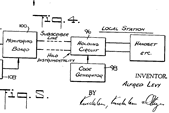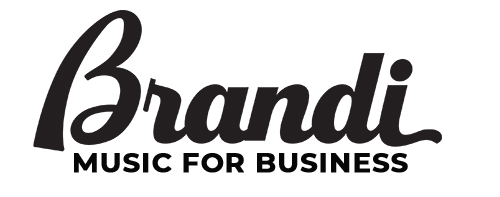Summary
A ringing phone has long been a sign of success for any business. Today, however, we live in an omnichannel world with customer engagement scattered across multiple touchpoints. In this report, we argue that the voice channel (also known as the inbound call) is a critical component of customer engagement. The major drawback in this channel is the wait time, or as we call it, “hold time.”
For many organizations, addressing phone hold time is not part of an overall brand and customer service strategy. Voice contact with your customer base is an opportunity to build brand loyalty, even when that customer is waiting to speak to an available representative.
The significance of inbound calls.

The inbound customer service call is still number one. Microsoft surveyed 5,000 customers for its 2018 State of Global Customer Service Report. 95% said customer service influences brand choice and loyalty. Here are some other interesting discoveries:
- In the US, 62% say they have stopped doing business with a brand because of poor customer service.
- Overwhelmingly, those surveyed feel that a knowledgeable customer service representative is the most important aspect of a good customer experience. Only 9% say they prefer to find information without contacting customer support.
- Which communications channel do customers prefer? Globally, 39% said phone. The next preferred method was emailing at just 20%.
Buyers are calling first.
In consumer markets, most buyers are calling first, even when shopping on a mobile platform. A study by Google confirms that 61% of mobile users call a business when they’re in the purchase phase of the buying cycle.
Some very successful businesses actually prefer inbound calls precisely because of the opportunity for customer engagement.
Billion-dollar shoe e-tailer Zappo’s sees the telephone as their number one customer contact method. “Other companies hide their phone number. We put our’s front and center on the website,” says former call agent Ryo Hanalei Zsun. Zappo’s CEO Tony Hsieh says, “We’re actually experimenting with ways to get more people to call because it’s such a valuable marketing and brand builder for us.” [Forbes, Tony Hsieh Reveals The Secret To Zappos’ Customer Service Success In One Word, June 12, 2017]
Did you catch that? Calls are a valuable marketing and brand builder.
Avoid customer engagement mistakes.
Sarah Gulbrandsen of the marketing firm RingPartner recognizes that online marketing efforts have taken priority, while other interactions may be ignored. “This failure to realize that inbound calls remain crucial within a sales strategy is both an unfortunate oversight and a costly one, with research now indicating that plenty of prospective buyers still like to reach out and touch someone,” Sarah Says. [Sales Hacker, Inbound Sales Call Statistics, Jan. 1, 2018]
You may not be operating a Zappo’s “School of Wow” for your call center employees, but you can find room for improvement in your call-handling practices. Julie Brown, CEO of phone-on-hold marketing firm Easy On Hold says to admit you have an on-hold dilemma. “It will make a huge difference, of course,” says Julie, “it begins with simply admitting that callers are indeed waiting on hold.”
Businesses need inbound calls, but also need people to wait.
The (2015) Arizona State University Annual W.P. Carey School of Business Customer Rage Survey reported that “almost three-quarters of customers identify the telephone as their primary channel for solving their most serious problems.” The survey also reported that the number one thing people don’t want to hear when they call customer service is, “Your call is important to us, please continue to hold.” [NBC News 12/14/2016]
Calling. Holding.
The calls keep coming in, and the calls keep getting placed on hold. A survey by American Texting firm “Talk To” concluded that 86% of consumers say they’re placed on hold every time they call a business. More staggering is the survey’s conclusion that each of us spends 13 hours on hold every single year.
86% of consumers say they’re placed on hold every time they call a business.
Talk to survey
48% believe the customer service representatives who answer phone calls are “not helpful.”
And what are businesses doing with that customer wait time? Some are using it to build brand loyalty and share information callers find helpful.
Customized messages enhance caller engagement.
Bronson Advance Cardiac Care, a medical facility in Kalamazoo, Michigan, is one of hundreds of healthcare facilities using Easy On Hold custom messaging on hold. Chief Administrator Kurt Kuppler says the Easy On Hold system is “very effective in increasing patient understanding of how to use our office, as well as helping us manage the demand of our resources.”
Wine Country Gift Baskets, a successful gift catalog company, tracked abandoned calls and was alarmed at the potential for lost business. A series of relevant, informational greetings was deployed to help. “It has certainly been a success story for us,” says Wine Country’s Richard Germann. “We have had very few abandoned calls. [In] the past we had many abandoned calls.”
These organizations have found a formula for making hold time work in their favor.
What’s the secret sauce?
Consider the different elements of sound that can be incorporated into a phone on-hold audio experience.
Music on hold from the 1960s.

In 1962, when Alfred Levy discovered a problem with the phone lines at his factory, he located a loose wire that was touching a girder on the building. The steel in the building picked up the music being transmitted by a nearby radio station. Callers heard the radio station on hold. By 1966, Levy patented his on hold electrical circuit and the “hold button” was born. [US Patent US3246082A]
Repetition results in longer hold time perception: Curtin University, 2010
Adrian North, professor of psychology at Curtin university in Western Australia, set up a study to determine some of the qualities of music that would keep people on hold. When callers responded to a printed advertisement they were immediately placed on hold. Some callers heard an announcement that said, “all lines are busy, please hold.” This was the least popular among the options.
About a third of the callers were subjected to an instrumental version of the Beatles’ “Hey Jude” performed on the pan pipes. Even though people admitted that the pan-pipe music was not very likable, they were the ones who stayed on hold the longest. [British Journal of Psychology, Music And On-Hold Waiting Time, Dec. 24, 2010] North suggests that the caller perceived that the song blurred the line between beginning and end, so the
the caller was unable to calculate the length of time he was holding, resulting in a perception of a shorter hold time.

One-third of participants heard the Beatles’ original recording of the song, and as it finished, then started over once again, callers could count the number of times they heard the same song. This led to a perception of a longer hold time. Conclusions from this study are:
- Repetition causes the perception of a longer wait time.
- Commonly-used phrases such as, “please hold” can actually increase
caller abandonment rates. - Even though the pan-pipe listeners stayed on hold longer, they reported a
strong dislike of the on hold content.
Music on hold can improve customer engagement but requires careful curation: likable content, and little repetition.
We apologize for the wait: Israel Institute of Technology Study
Without a customer on the line, there’s no customer engagement. How long are people willing to remain on-hold? In a study by Israel Institute of Technology graduate student Nira Munichor, 123 students called a number and waited on hold. Students did not know that after 2 minutes on hold their call would be answered.
Music with no “thank you” greeting: 70% hung up in less than 2 minutes.
Music occasionally interrupted with a message apologizing for the wait: 67 percent hung up in less than 2 minutes.
Standard “thank you for holding” messages have little effect on hold times, as revealed in a 2007 report published by the American Psychological Association.
Callers connect “hold music” with a poor customer experience.
Much of the “hold music” that is in use on phone systems is unfamiliar background music composed by unknown artists. Here’s why. According to laws in most countries, when a piece of music is played over a phone system, a performance occurs. A music performance requires a license. Hold music, also known as elevator music, vanilla music, or royalty-free music, is created to enable businesses to play affordably-licensed music on their phones. It truly is “background” music and is not engaging by design.
Let’s see what customers have to say about “hold music”:
- @moneypennyyyy: Why is hold music the worst?
- @amyahsan: @NatWest_Help Can you please sort out your hold music. It’s excruciating, and the loop is too short.
- @ScottMcGready: People that compose hold music have no soul. Fact.
- @BionicDance: Is ‘On Hold’ music designed to irritate people into hanging up, or is the idea that it might soothe angry customers while they’re waiting so they won’t yell at the support staff?
Hopefully, as suggested by @BionicDance, angry customers will be more relaxed because of the music.
Something unexpected may improve customer engagement during long wait times.
Easy On Hold offers some unique alternatives to the expected “hold music”. As the exclusive agent for the popular business music service Brandi Music, Easy On Hold can stream hit mainstream music (songs people know). In between the songs a short branding message can play. The overall effect is that of a brand’s own radio station. In a call service or support center, for example, longer hold times are expected, opening the door to more creative alternatives.

For wireless carrier T-Mobile, unifying the caller experience over multiple call centers and thousands of agents was a daunting task.
Until approaching Easy On Hold, callers were hearing a variety of hold music (or nothing at all) when on hold. In addition, hold times can be 30 minutes or longer. The popular music feed is now playing along with short updates on new products and services every 2 to 3 songs. Customers have also changed their tune:
- @stevie_mat: This T-Mobile hold music is J.Los’ If You Had My Love. I swear it’s like they know my heart! (Sept. 15, 2018)
- @CooleySavant: I’m on hold with T-MOBILE right now and they’re playing “The Boy is Mine” as their hold music. Green Day was playing before. I don’t know what the (expletive) is going on here but it’s completely quelled my anger. (June 14, 2018)
- @the_rocko_: I was just on hold with T-Mobile and they used Bring Me The Horizon as hold music. What a time to be alive. (May 8, 2018)
- @crushedgems: I’m on hold with T-Mobile right now and instead of the regular hold song, they’re playing Linkin Park (heart icon) (July 21, 2017)
What’s going on? Callers are so delighted with an unexpected waiting experience, they’re talking about it on social media.
The unexpected music experience was the right move for T-Mobile. Customers are happy enough to share their feelings publicly.
Emilie Kroner, head of organization engagement for consumer markets at sales data firm dunnhumby, describes the goal of customer experience strategy as “[making] customers so happy that they will want to share their positive interactions with your brand.”
[American Marketing Association: The 7 Pillars of Customer Centricity]
Voiced marketing messages improve customer engagement.
Managers often make the mistake of allowing the phone hold audio to be completely controlled by the tech or I.T. department. Many phone solutions have native music files that play on hold, but we already know what people are saying about that kind of music (see Twitter results, above). The content callers hear while waiting on hold should be the responsibility of the marketing department.
Stewart Gandolf, CEO of marketing firm Healthcare Success recommends custom messages on hold for his healthcare clients.
“Placing a caller on hold is a risk. When you create an engaging experience for your patients you minimize the risk of premature hang-ups and instead create an invaluable marketing opportunity.”
Stewart Gandolf, CEO at marketing firm Healthcare Success
4 ways to build customer engagement in the voice channel during phone on hold time
Reduce friction
The term “customer engagement” is a term often used to describe communications connections between a consumer and a company or brand. Engagement is achieved by breaking down the customer journey into touchpoints and maximizing messaging at each touchpoint. Clearly, the inbound call is a critical touchpoint that will either cause friction along the journey or improve the customer relationship.
The call comes in. The waiting begins. Will this moment be a typical negative experience or a successful, loyalty-building, relationship-building interaction? As a beginning, we suggest the use of what we call 4 Tools for Engaging Callers On Hold: The human voice, relevant messaging, a conversation, and a call to action.
Use a human voice
The importance of the human voice is on the rise. As we read less we are listening more. Technologies such as Alexa and speech-to-text are bringing the spoken word to the forefront of our every activity. It is happening as podcasts become more popular.
“If you are in the business of interacting with customers, you should be thinking deeply about how your communications and marketing strategies will need to evolve in the age of sound,” says Paul Michelman, editor-in-chief of MIT Sloan Management Review. [Sloan Management Review, 01/20/2017]
Be relevant
“The most successful brands are relevant brands.”[Forbes.com, How To Keep Your Brand Relevant In A Rapidly Changing World, 10/23/2017] Forbes author Brian Lischer points out that Nike and Apple remain relevant because they are willing to do things differently. After tuning into skateboarders, Nike launched NikeSB and built a legion of brand evangelists. Convince callers that you understand them and they will stay with you. Talk about their problems. Be consistent across platforms.
Think of hold messaging as a conversation
Of course, the caller cannot converse while waiting on hold, but by resembling ordinary person-to-person conversation in our brief expressions on hold, we create a feeling of trust. Rather than tell-and-sell, canned pitches or pontification, use common words in an inviting tone. The new streaming message on hold systems can insert “good morning” and “good afternoon” phrases, just as if you were there in person. The aim is to achieve virtual intimacy. [Easy On Hold: The End Of Boring Messages On Hold, 2018]
Use a call-to-action
The on-hold opportunity can be informational, even inspirational, but a successful customer interaction demands action. What is the logical next step? Offer alternatives to waiting, such as websites or wikis. Ask the caller to participate in a program for super-users. Give instructions on a user tip or hack that can be viewed as “inside information”. Presenting one small easy step isn’t too much to ask.
Opportunity for brand loyalty
We’ve seen the studies: the telephone is still the king of communication in business. Meanwhile, callers are likely to spend up to 10 to 20 full days of their lives waiting on hold. To solve the on-hold dilemma, companies are plugging in music for callers to hear, a solution that prompts complaints. Others play voice messages that thank callers for waiting and remind them that they are on hold, but only temporarily. Standard “on hold” greetings are responsible for higher call abandonment rates.
A creative approach to music on hold, Easy On Hold’s music solution has been a success story for T-Mobile. It seems that providing an unexpected call-waiting experience is valuable.
In the hands of skilled marketers, the phone on hold dilemma can be conquered by deploying the human voice, relevant messaging, conversational communication, and a call to action that moves the customer toward the next touchpoint on the journey with your brand.
